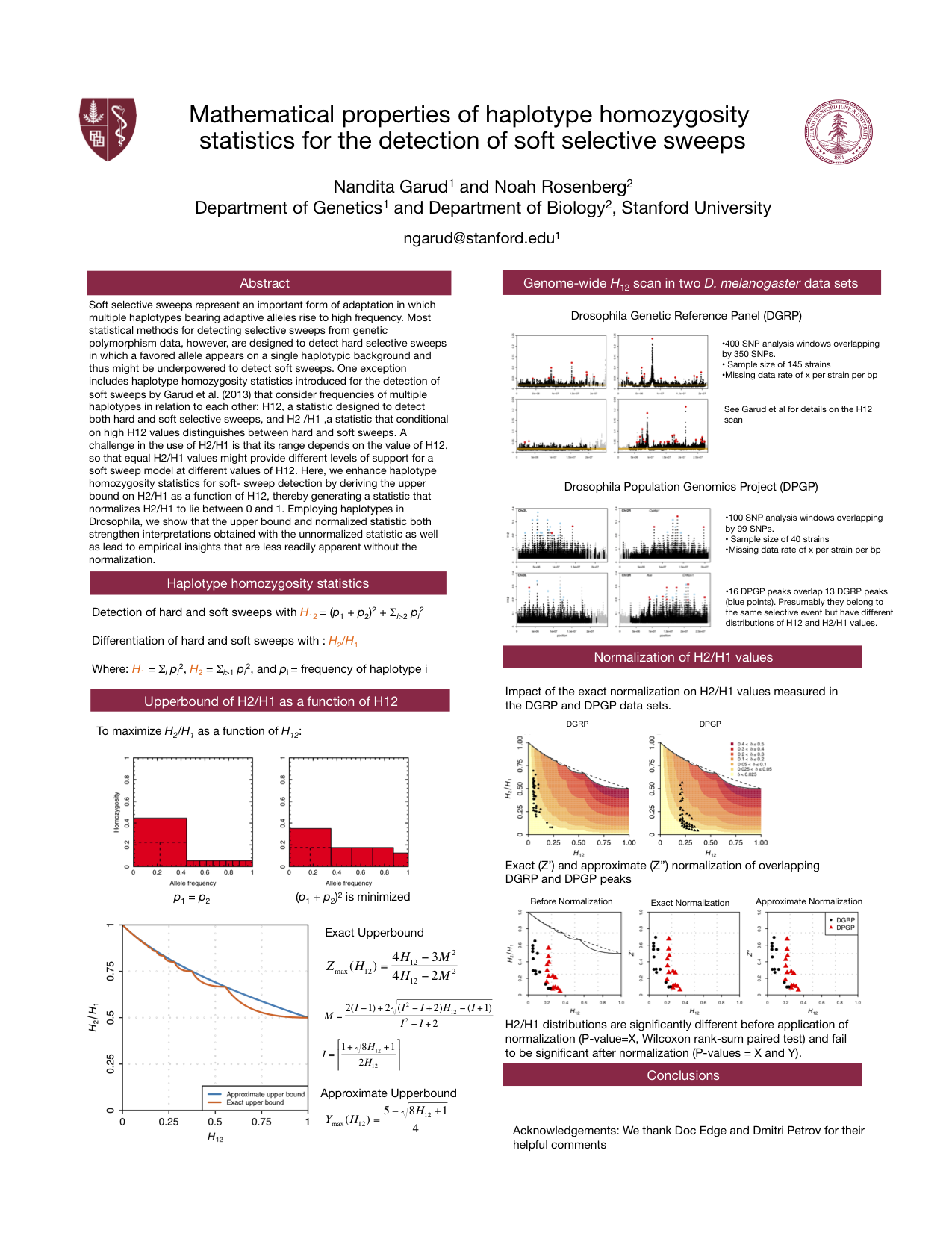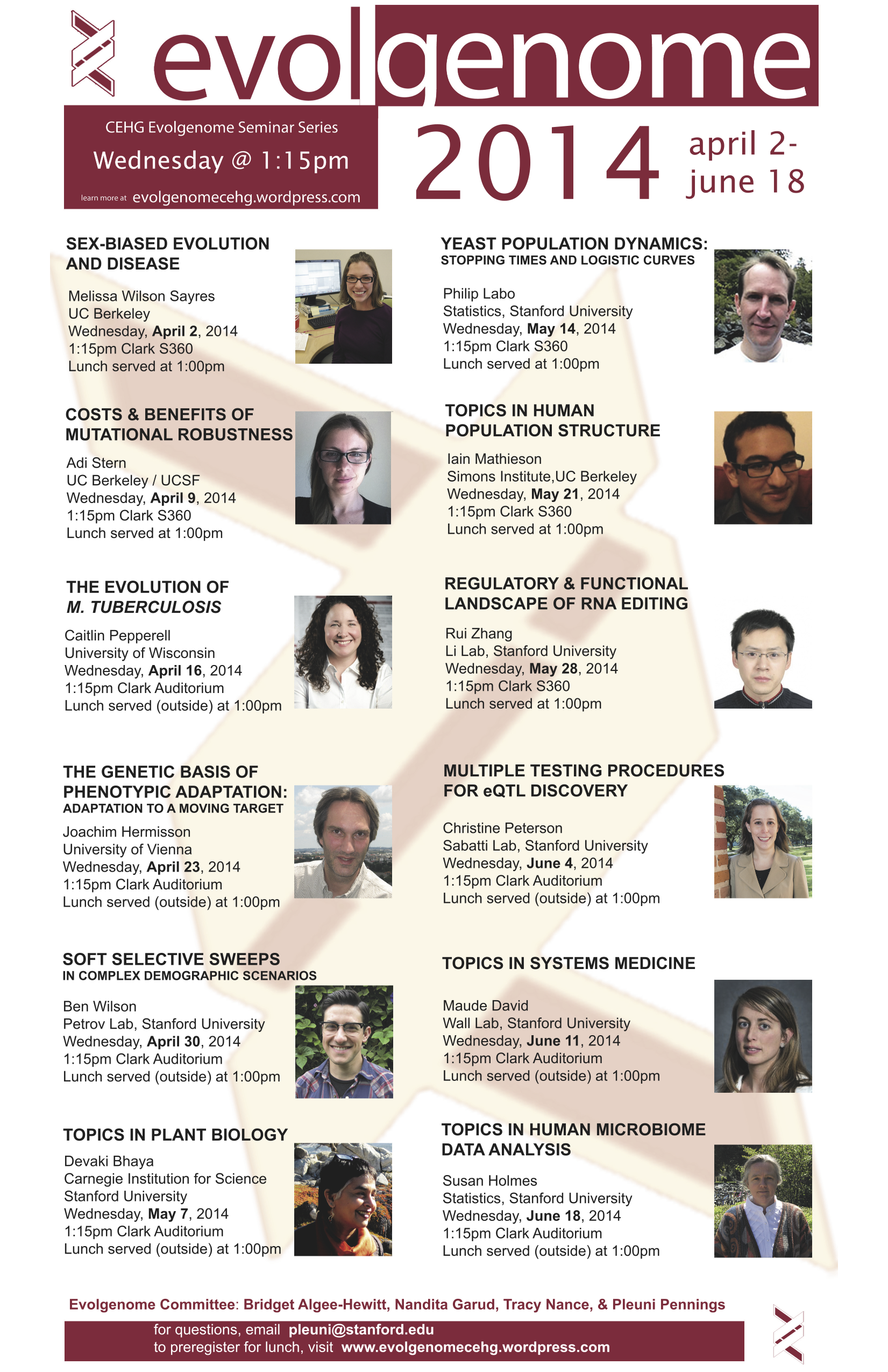This year at the Society for Molecular Biology and Evolution meeting I am presenting a talk on my work on “Disentangling the effects of demography and selection on haplotype structure in Drosophila melanogaster“. In my paper, I show that current demographic models that have been fit to neutral regions of the genome fit some summary statistics which assume independence between polymorphic sites, such as S, Pi, but fail to fit other summary statistics which take into account correlation in the data, such as long-range linkage disequilibrium and genome-wide haplotype homozygosity levels.
In addition, I am a co-author on Philipp Messer’s talk on “New statistical methods detect both hard and soft sweeps in malaria parasites.” In this paper, Philipp and I apply several different, but related, haplotype homozygosity statistics to the malaria genome and show that we have great power to recover several positive controls, depending on the method used.
We will both be presenting in the session Wednesday, June 11 titled “Detecting selection in natural populations: making sense of genome scans and towards alternative solutions.”


